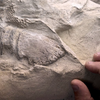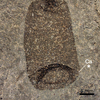The Large Hadron Collider Is Back At It Again!

Above: A section of the LHC interior
The Large Hadron Collider is beginning its third operational run, after a maintenance period of four years. The Switzerland-based facility is the largest particle collider in the world and the site where the Higgs Boson particle was first observed in 2012. The LHC is operated by CERN, or the European Organization for Nuclear Research, an association of European states that runs a handful of particle accelerators across the continent, with the Large Hadron Collider at the center. The full length of the collider is massive, running about 17 miles in circumference.
The last four years has seen various upgrades implemented into the facility, mainly to outfit the collider with higher-intensity beams and a new data collection system. These upgrades will aid in investigating the universe’s matter-antimatter asymmetry, as well as dark matter properties. All this will take place during the collider’s third operational run, which is expected to last the next four years.
Will running the collider open a wormhole in our reality? Probably not, since we've been just fine the last two times. It has, however, been an incredible resource in understanding the building blocks of physics! Who knows what exciting advances in our understanding of the fabric of the universe we’ll discover in that time?
Featured Product
Joe Frazier Boxing Glove
Cool Things!

Is “Paul is Dead” Dead?: Unpacking One Of Pop Culture’s Most Enduring Conspiracy Theories

Scientists Discover Hooves and Skin in Preserved Dinosaur "Mummies!"
A dinosaur discovery just in time for Halloween! In a new analysis of a group of fossils from Wyoming, Scientists have determined this group of fossils are dinosaur “mummies,” with preserved skin and even hooves.

Scientists Record a Bat Catching Birds Mid-Flight!
Bats, birds, screeches, oh my! In a reverse-Hitchcock twist, a new study reveals that a species of European bat catches and eats birds mid-flight.
Specimen Deep Dives

The House that Ruth Built: The Story of the Old Yankee Stadium

The Queen of the Skies: the Story of the Boeing 747

Old Ironsides: The USS Constitution and the Start of the U.S. Navy
Long Form Articles

The Artist Behind the Macintosh: Susan Kare and Apple Computers
While the two Steves, Jobs and Wozniak, are the most well known faces behind Apple computers, equally important to the products and culture of the company were those who crafted the experience of using their computers through design. The most notable of these visual architects was Susan Kare, a designer responsible for “humanizing” Macintosh computers.

Can I Lick It? Yes You Can!
Have you ever been unable to tell if a fossil was really a fossil, but you were too embarrassed to admit it? Have you ever wanted to lick a fossil just because, but you didn’t want to risk judgment from your peers? Well, good news! You can kill two birds with one stone! Licking a fossil can actually help you determine if it’s the real deal or just another rock.

Is It Legal To Own a Meteorite: How to Start Your Outer Space Collection!
Meteorites are some of the rarest geological specimens to be found on Earth. Of course, since these stones are not of our world, purchasing them can sometimes be a confusing process. Is it legal to own a meteorite? In short, yes! Read on for help starting your cosmic collection!

















